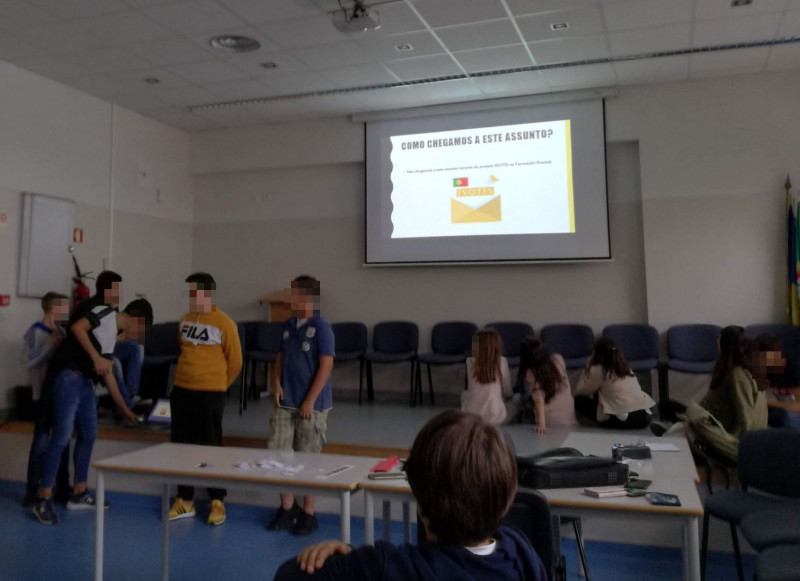How to contribute to a social just world? The experience in Portugal
3. Children take action
3.3. Our school and inequalities (Age range: 7+)
The teacher can organize a whole group discussion to reflect on mechanisms that the school uses to deal with and diminish social inequalities.
Alternatively, in small groups, children can reflect and register on ways that their school uses to mitigate inequalities, describing how each school structure or procedure achieves that goal. To complement their research, children can interview their peers, teachers, school leaders, and other school staff to learn more about the school.
children between 7 and 10 years old
With children from 7 to 10 years old, a conversation about the school and inequalities occurred during the stimulus situation. When discussing inequalities, the teacher inquired “What can we do?” and followed “In this school, there are children with more and less [financial] possibilities. What do we do in our school for children to have the same opportunities?” A child promptly referred “we give money”. The teacher clarified “we give money?”. Another child answered, “no, but we give food baskets”. Children added: “we do campaigns to help”, “we share our materials and snacks”, “parents don’t have to buy materials and books”, “we can request books from our readers club”, “we can request tablets and take them home if we don’t have”, “we help each other”. Another child concluded: “here there are people who are poor and don’t have money and we all do the same things”.
CHILDREN BETWEEN 12 AND 15 YEARS OLD
A group of older students decided to conduct research on school mechanisms to reduce inequalities. Students conducted interviews with other children and school staff to inform themselves on each mechanism and resorted to that information to develop a Power-Point presentation. They presented to their
younger peers (10-12 years old) a Power-Point introducing the mechanisms they identified:
the food corner;
the group of responsibility focused on solidarity;
the library that provides children books and tablets;
the common, equal and shared material.
.jpg)
Links with the curriculum:
- Citizenship education: human rights, social justice
- ICT: development of a presentation
